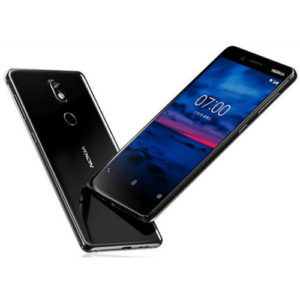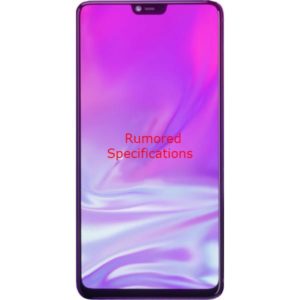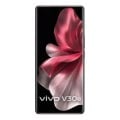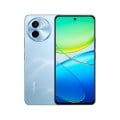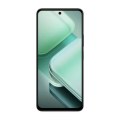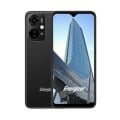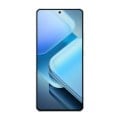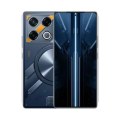Nokia 7 Plus vs Oppo R15 Dream Mirror Edition
The Nokia 7 Plus Android 4G smartphone was launched on March 09, 2018. Much to the delight of HMD Global, a Finnish company that makes and markets smartphones and feature phones under the “Nokia” brand name, the 7 Plus garnered huge popularity among smartphone lovers and Nokia fans.
The hotly anticipated Oppo R15 Dream Mirror Edition smartphone is expected to hit the store shelves on April 01, 2018. The phone has been subject to a slew of rumors and leaks following its announcement earlier this month.
Here’s a brief comparison between two smartphones based on design, hardware, and price:
The Nokia 7 Plus sports an eye-catching aluminum alloy body (6000 series) design with copper edges. The phone features a large 6.0 inches IPS, LCD, FHD+ display and its dimensions are 158.4 x 75.6 x 8 mm (6.24 x 2.98 x 0.31 in).
Nokia 7 Plus smartphone has Corning Gorilla Glass 3 that offers an additional protection to the screen. It is currently up for grabs in black and white color options.
On the back, the phone sports a 12-megapixels + 13-megapixels dual camera setup with dual-LED Flash and AF. There’s a 15-megapixel f/2.0 camera in the front for selfies.
The long-rumored R15 Dream Mirror Edition smartphone features an equally beautiful ceramics, glass body design with an even bigger 6.28 inches AMOLED FHD+ display. The mammoth screen is protected by Corning Gorilla Glass 5.
The phone’s dimensions are 75.0 mm x 155.3 mm x 7.5 mm and it weighs in at 175 grams (with battery). Despite the lack of an official confirmation, tech gurus believe the R15 Dream Mirror Edition will be available in black and red color options.
If recently surfaced reports are anything to go by, the phone’s back will house a 16-megapixels + 20-megapixels camera with DualTone LED flash and AF. A hearty 20-megapixel selfie camera will be located in the front.
The Nokia 7 Plus smartphone packs a powerful Qualcomm Snapdragon 660 MSM8956 Plus, 64-bit processor along with an equally robust Adreno 512 GPU, under the hood. It offers 4GB/6GB of RAM and 64GB/64GB of internal memory which can be expanded up to 256GB using SIM 2 slot.
Furthermore, the HMD-manufactured smartphone features three slots including microSD, microSDHC, and microSDXC. The device comes with all sorts of sensors such as proximity, accelerometer, compass, ambient light, gyroscope, and a rear-mounted fingerprint sensor.
The Nokia 7 Plus smartphone draws its juices from a 3,800 mAh Lithium-Polymer battery that offers up to 300 hours of standby time, up to 14 hours of talk time with a charging duration of up to 1.5 hours. The battery is non-removable.
If rumors doing rounds online prove to be true, the Oppo R15 Dream Mirror Edition smartphone will be powered by a Qualcomm Snapdragon 660 MSM8976 Plus, 64-bit processor. There’s hearsay that the impending phone will use Qualcomm Adreno 512 graphics processing unit.
The phone will be backed by a 3,400 mAh Lithium-Polymer battery that offers up to 300 hours of standby time, 15 hours of talk time with a charging duration of up to 1.4 hours. The battery will be built-in.
Earlier reports suggest the R15 Dream Mirror Edition smartphone will have 6GB of RAM and 128GB of expandable onboard storage (up to 256GB). Aside from that, it will offer 3 card slots including microSD, microSDHC, and microSDXC.
Oppo’s upcoming phone will reportedly feature multiple sensors such as proximity, accelerometer, ambient light, compass, gyroscope, and a fingerprint sensor which will be placed on the back. It’s worth noting that the Chinese handset maker has neither confirmed nor denied these speculations.
While the Nokia 7 Plus is currently available for about $479, details about the price tag the R15 Dream Mirror Edition smartphone is likely to carry, are scarce. Nevertheless, more shreds of information are expected to surface online ahead of the phone’s much-awaited launch this month.
-
Product Name
-
Product Image
-
Price
-
Our Rating
-
Brand
-
Category
General
-
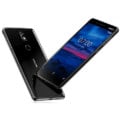
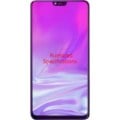
-
Model7 Plus Oppo R15 Dream Mirror Edition
-
Released09 March, 2018 26 March, 2018
-
StatusAvailable Available
Design
-


-
Type Design Type called form factor refers to a mobile phone's size, shape, and style as well as the layout and position of major components of phone. There are three major form factors seen in mobile phones => bar phones, folding phones and sliding phones.Bar Bar
-
DimensionsNo Data Available 75.2 mm x 155.1 mm x 7.5 mm
-
WeightNo Data Available 174 Grams (With Battery)
-
WaterproofNo
Display
-


-
Display Type Display Technology => A number of display technologies and types used in mobile phones => TFT (Thin Film Transistor), IPS (In-Place Switching), OLED (Organic Light Emitting Diode), AMOLED (Active-Matrix Organic Light-Emitting Diode), Super AMOLED (an even advanced version of AMOLED), Resistive Touchscreen (Resistive touchscreens contain two layer of conductive material with a very small gap between them which acts as a resistance), Capacitive Touchsceen (Capacitive touchscreen technology consists of a layer of glass coated with a transparent conductor)IPS, LCD capacitive touchscreen AMOLED capacitive touchscreen
-
Size6.0 inches FHD+ 6.28 inches Full HD+
-
Resolution2160 x 1080 Pixels, 24 bit color depth 2280 x 1080 Pixels, 24 bit color depth
-
Display Colors Display Colors is refers to the number of different shades of colors that the screen is capable of displaying => 64K colors, 256K colors and 16 million colors, Obviously 16M is highest available range of colors and better than others.16M Colors 16M Colors
-
Pixel Density Pixel Density (PPI) is refers to the concentration of pixels on a particular display, measured in pixels per inch (ppi). Pixel density is calculated by dividing the diagonal pixel resolution of a display by its diagonal size, higher pixel density better display quality.~ 402 PPI Pixel per inch ~402 PPI Pixel Per Inch
-
Touch ScreenYes Multi Touch Support Yes Multi Touch Support
-
Display Protection Display Protection => Gorilla Glass is a special alkali-aluminosilicate glass shield with exceptional damage resistance that helps protect mobile displays from scratches, drops, and bumps of everyday use, It is always better to go for a smartphone with Gorilla Glass for that added protection and peace of mind.Yes Corning Gorilla Glass Yes with Gorilla Glass 5
-
FeaturesIPS, LCD, FHD+ display
Multi-Touch Screen
~ 402 PPI Pixel Density
Capacitive Touch
Eye Care Mode
Bezel-Less Screen
Corning Gorilla Glass
2.5D Curved Glass
18:9 Aspect Ratio OLED FHD+ display
~ 402 PPI Pixel Density
Corning Gorilla Glass
Capacitive
Scratch resistant
Hardware
-


-
CPU The main chipset of the device.Octa-Core 4 x 2.2GHz Kryo + 4 x 1.84GHz Kryo Clock Speed Octa-Core 4x 2.00GHz ARM Cortex A73 + 4x 2.00GHz ARM Cortex A53
-
GPU GPU (Graphics Processing Unit) is a single-chip processor designed to rapidly manipulate and alter memory to accelerate the creation of images in a frame buffer intended for output to a display, This includes things such as lighting effects, object transformations, and 3D motion.Qualcomm Adreno 512 GPU ARM Mali G72 MP3 700MHz
-
RAM (Memory) RAM (Random Access Memory) is a type of computer memory that can be accessed randomly, any byte of memory can be accessed without touching the preceding bytes that allows information to be stored and accessed quickly from random locations. RAM is the most common type of memory found in computer systems, smartphones, tablets and other electronic devices.4GB/6GB 6GB
-
Internal Storage Internal Storage is a data storage space (flash memory) mostly used in smartphones, tablets and other electronic devices where operating system, apps, music, photos, videos, files and other user data Is stored.64GB 128GB
-
Memory Card Slot Memory Card Slot is a special slot for inserting a memory card. Memory cards allow you to expand the phone's built-in memory, A memory card (sometimes called a flash memory card or a storage card) is a small storage medium used to store data such as text, pictures, audio, and video, for use on small, portable or remote computing devices such as mobile phones, mp3 players, digital cameras.microSD, microSDHC, microSDXC External Memory Support up to 256GB (Uses SIM 2 Slot)
-
Sensors Sensors are electronic components that detects and responds to some type of input from the physical environment. The specific input could be light, heat, motion, moisture, pressure and location, The output is generally a signal that is converted to use in computing systems, a location sensor, such as a GPS receiver is able to detect current location of your electronic device.Proximity Sensor
Accelerometer
Compass
Ambient Light
Gyroscope
Fingerprint (Rear Mounted) Fingerprint Sensor (Back Mounted), Proximity Sensor, Accelerometer, Ambient Light, Compass, Gyroscope
Software
-


-
Operating System OS => Every computer system run on a base software called Operating System (OS). Operating System controls all basic operations of the computer (such as smartphone, PDAs, tablet computers and other handheld devices). The Operating System allows the user to install and run third party applications (apps), apps are used to add new functionality to the device.Android 8.0 Oreo OS ColorOS 4.0 (Android 8.0 Oreo)
-
User Interface UI or user interface of a device is the look and feel of the on-screen menu system. How it works, its color scheme, how it responds to button presses, all of these things are part of the user interface.Yes with Modified Android Yes with ColorOS 4.0
Camera
-


-
Rear Camera Camera is able to capture photographs and usually videos, The most important characteristics of a camera are the resolution (measured in megapixels), lens focus type (fixed or automatic), higher megapixel cameras are known to capture higher quality photos, but not always a good measurement of the photos quality.12 Megapixels + 13 Megapixels (Dual Camera) 16 Megapixels + 12 Megapixels (Dual Camera)
-
Image4032 x 3024 Pixels 4608 x 3456 Pixels
-
Video2160p@30fps, 1080p@30fps, 720p@120fps 2160p@30fps, 1080p@60fps, 720p@120fps
-
Flash Flash Light => There is commonly two types of flash lights are used in camera mobile phones, LED Flash (LED flash offers lower power consumption with drive circuitry that takes up very little room, LEDs can be strobed faster than any other light source), Xenon Flash (xenon flash produces an extremely intense full-spectrum white light for a very short duration)Yes with Dual-LED Flash Yes with Dual-tone LED flashlight
-
Front Camera16 Megapixels with f/2.0 Aperture, 1080P 20 Megapixels
Network
-


-
SIM SIM (Subscriber Identity Module) is a small card that contains mobile network subscriber's account information. This allows the phone using the card to attach to a mobile network. The SIM card is most commonly associated with GSM and UMTS mobile networks. Moving a SIM card from one phone to another allows a subscriber to switch mobile phones without having to contact their mobile network carrier. SIM cards can also be used by a phone to store limited amounts of data, such as phone numbers and text messages.Standard SIM Nano SIM
-
Dual SIMHybrid Dual SIM (Nano-SIM + Nano-SIM/microSD Card), Dual Standby Hybrid Dual SIM (Nano-SIM + Nano-SIM/microSD)
Connectivity
-


-
Wi-fi Wi-Fi is a popular wireless networking technology using radio waves to provide high-speed network connections that allows devices to communicate without cords or cables, Wi-Fi is increasingly becoming the preferred mode of internet connectivity all over the world.Wi-Fi 802.11 a/b/g/n/ac, 802.11 n 5GHz, Dual Band, Wi-Fi Direct, Wi-Fi Hotspot, 2x2 Mu-MIMO Wi-Fi 802.11 a/b/g/n/ac, 802.11 n 5GHz, Wi-Fi Direct, Wi-Fi Display, Dual-Band, Wi-Fi Hotspot
-
USBUSB Type-C 1.0 with Charging and Mass Storage Function Type-C USB with OTG, Charging and Mass Storage Function
-
GPS GPS The Global Positioning System is a satellite-based radio navigation system, GPS permits users to determine their position, velocity and the time 24 hours a day, in all weather, anywhere in the world, In order to locate your position, your device or GPS receiver must have a clear view of the sky.Yes, with A-GPS, GPS, GLONASS, BDS Yes, with A-GPS, GPS
-
NFC NFC (Near field communication) is a set of standards for smartphones and similar devices to establish peer-to-peer radio communications with each other by touching them together or bringing them into proximity, usually no more than a few inches.Yes No
-
Wireless Charging Wireless Charging (Inductive Charging) uses an electromagnetic field to transfer energy between two objects. This is usually done with a charging station. Energy is sent through an inductive coupling to an electrical device, which can then use that energy to charge batteries or run the device.No
-
Headphone JackYes Yes
Battery
-


-
Capacity Battery CapacityNo Data Available Non-Removable 3,365 mAh Lithium-Polymer
-
PlacementNon-Removable
Media
-


-
Video PlaybackYes Support 3GP, MP4, FLV, WMV, AVI, MKV, H.264, M4V, H.265
-
Video OutYes With Wireless Media Connection Yes With Wireless Media Link
-
FM RadioYes Yes
-
Ring TonesWAV, AAC ringtones Yes
-
LoudspeakerYes Yes
-
HandsfreeYes
Data
-


-
4G LTE 4G LTE bandsLTE: 1(2100), 3(1800), 5(850), 8(900), 34(2000), 38(2600), 39(1900), 40(2300), 41(2500) MHz Yes
-
SpeedLTE Cat-6 300 Mbps Download, 50 Mbps Upload LTE : 850 / 900 / 1800 / 1900 / 2100 / 2600 MHz LTE-TDD : 1900 MHz (Band 39) LTE-TDD : 2300 MHz (Band 40) LTE-TDD : 2500 MHz (Band 41) LTE-TDD : 2600 MHz (Band 38) LTE : 700 MHz (Band 12)

